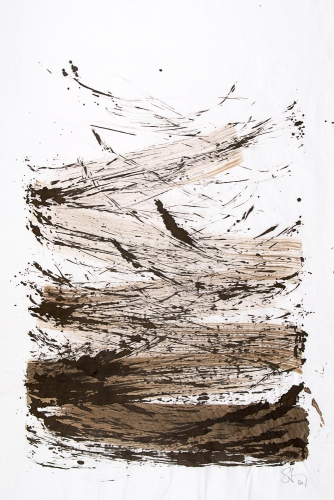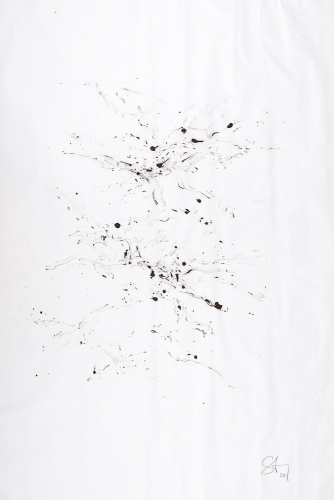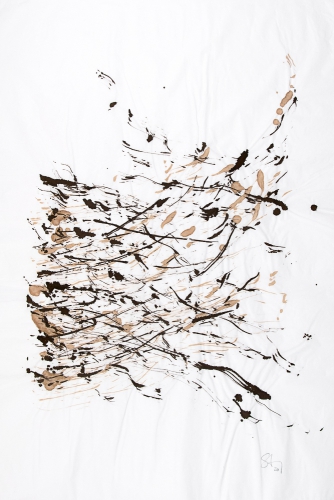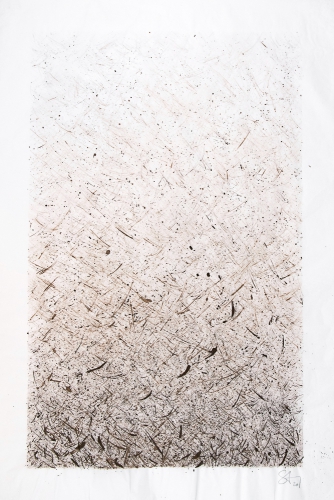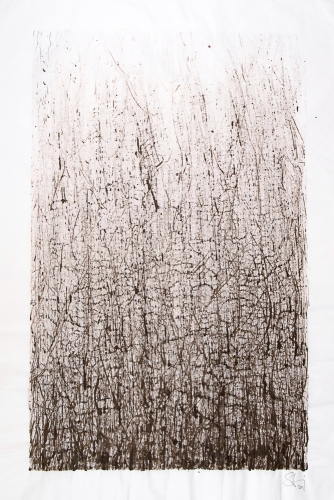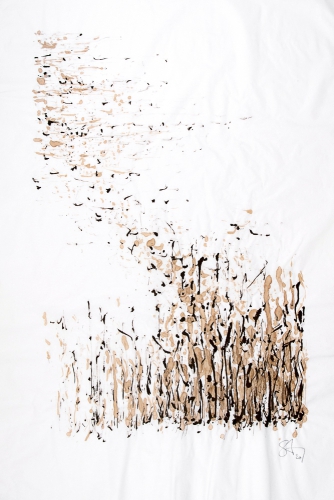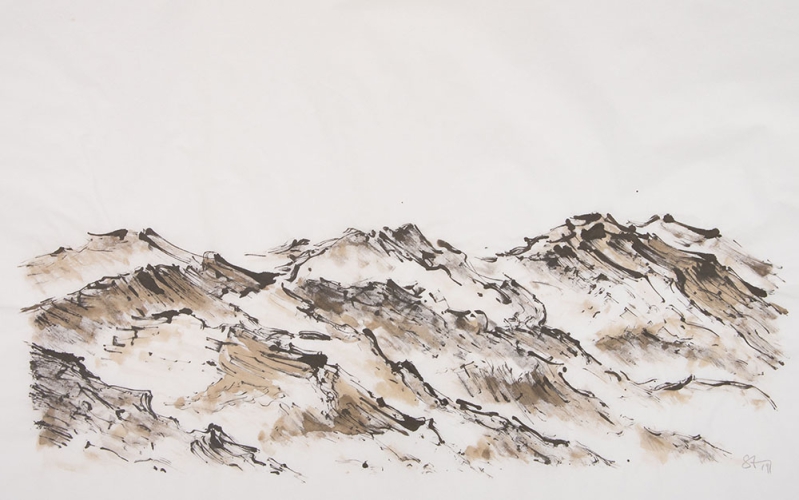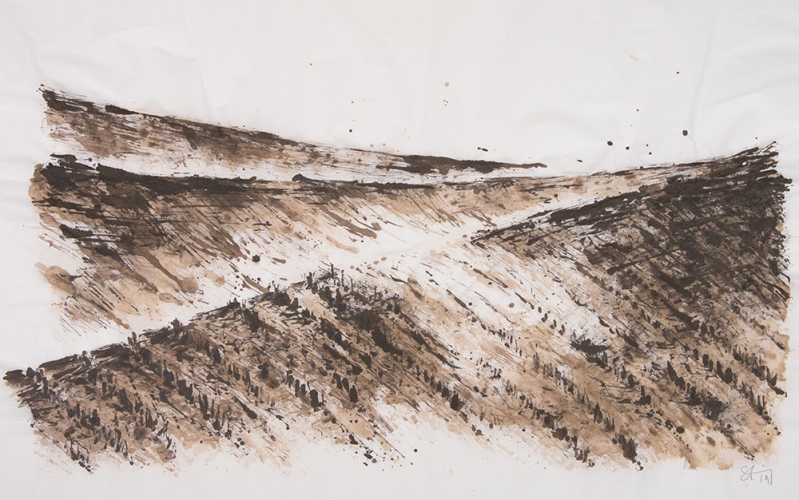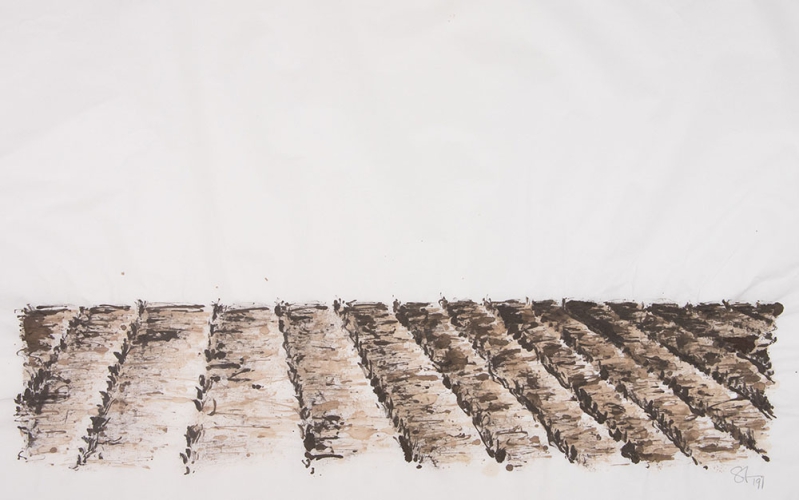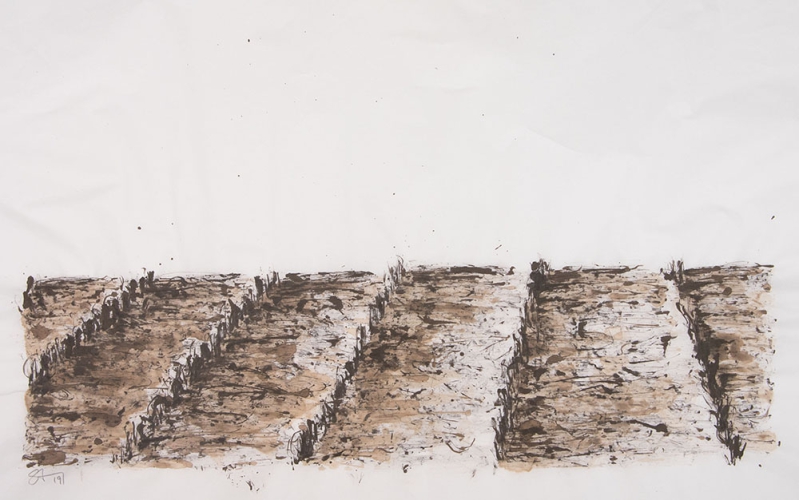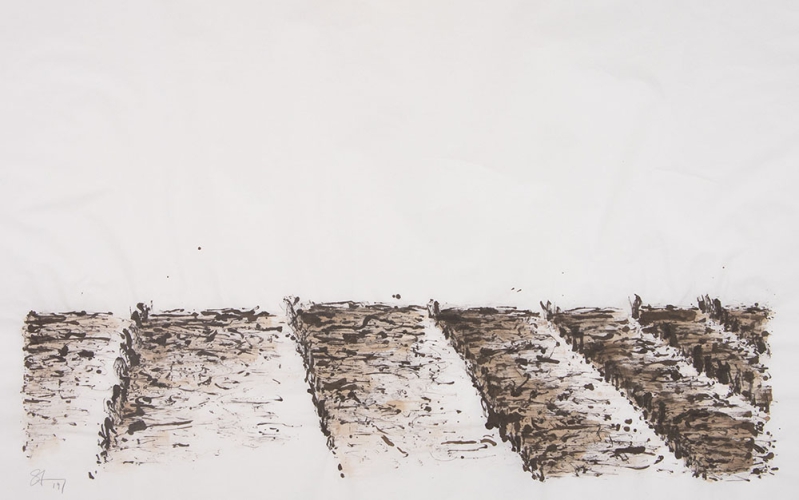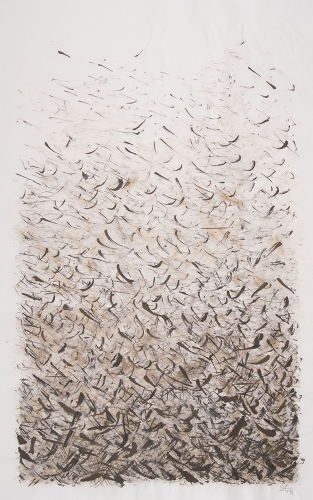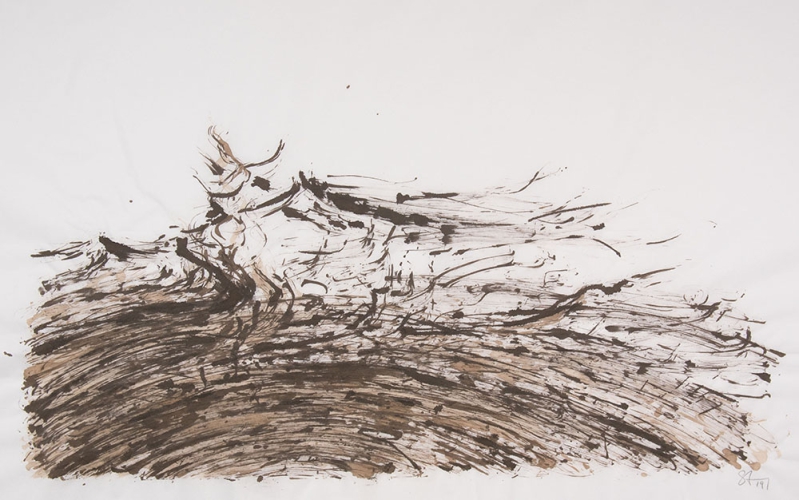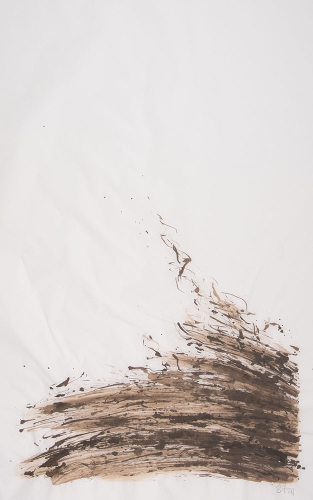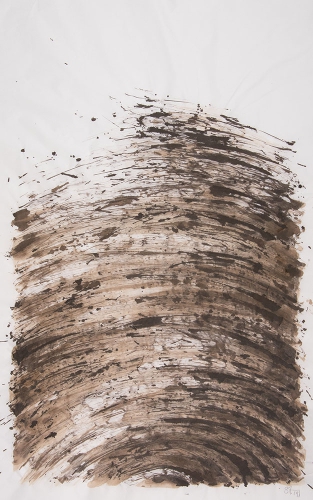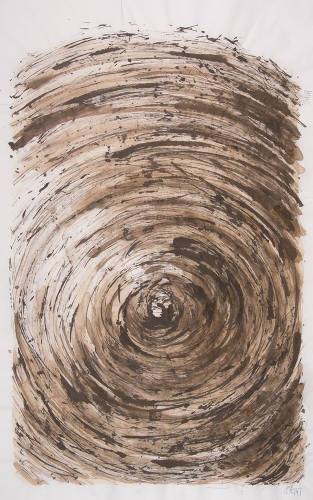These ink drawings were created during an Artist in Residence sojourn in the expansive countryside of Mecklenburg. Vast planes devoid of any notable elevation, stretch as far as the eye can see, with almost horizontal, vibrant lines deeply engraved by the even rhythm of machines. The typical Gothic brick churches are a reminder that these great cornfields belonged to the project of bringing Christianity to North Eastern Europe. The title, Give us today our daily Bread, recalls the symbol of Christ, as well as the more fundamental meaning of staple food.
All the images are drawn with straw stems or ears of wheat, using umbra (burnt earth) as ink on Chinese paper. Presented are the reverse sides of the drawings as the result. And so the drawings adapt classical backglass painting, creating the illusion of depth with a strong material character, notwithstanding the fine quality of the paper. Stubble fields, furrows, straw bales and yarrows are the motifs but the reduced and abstract implementation, allow a much wider association.
